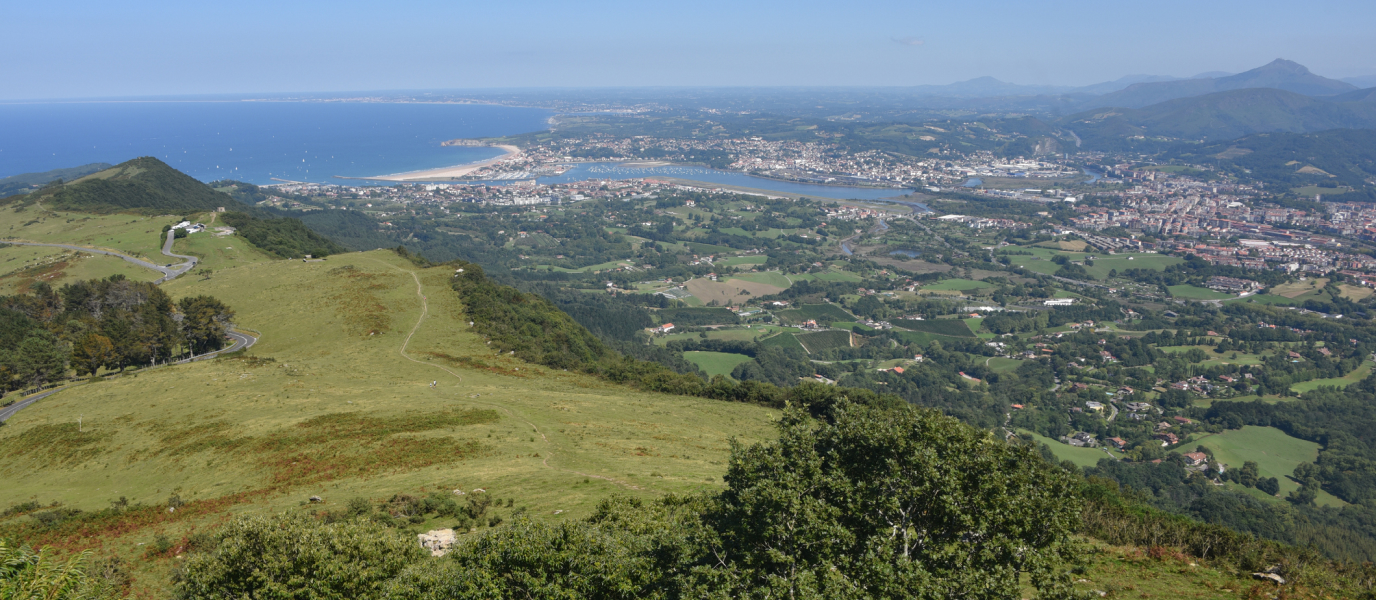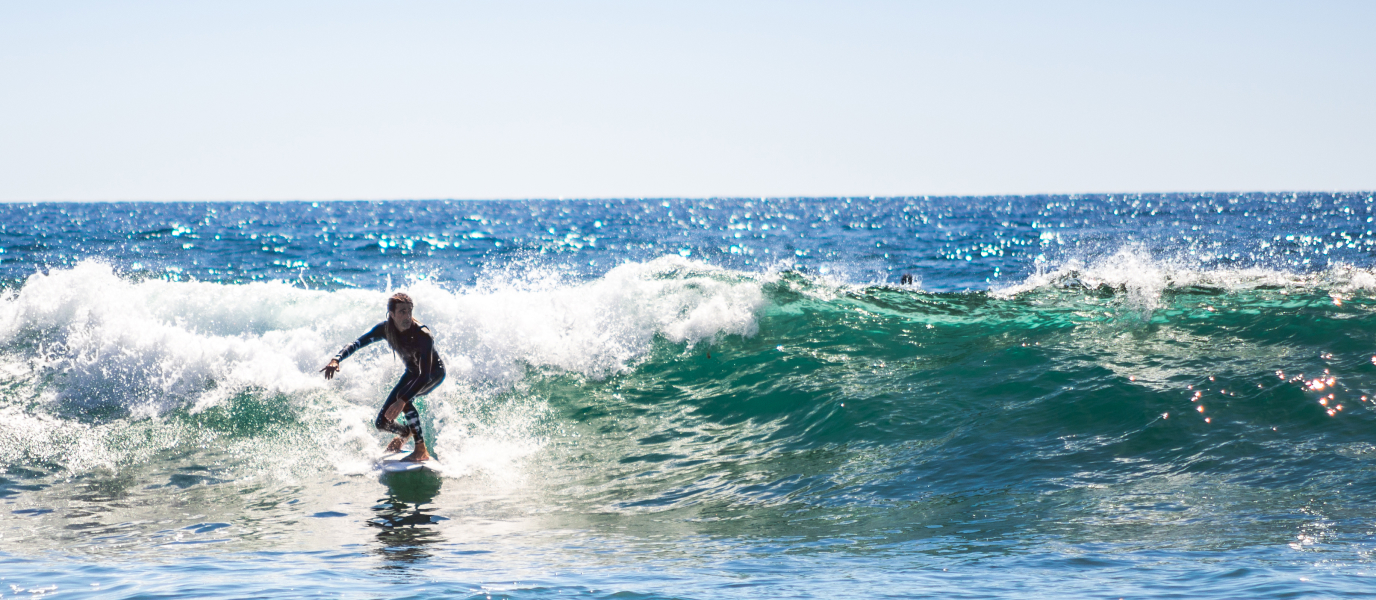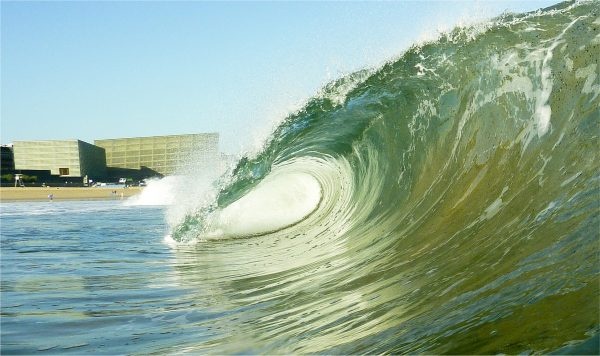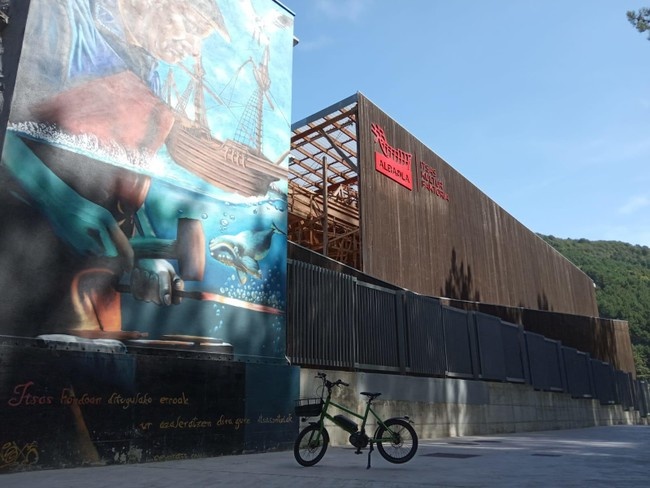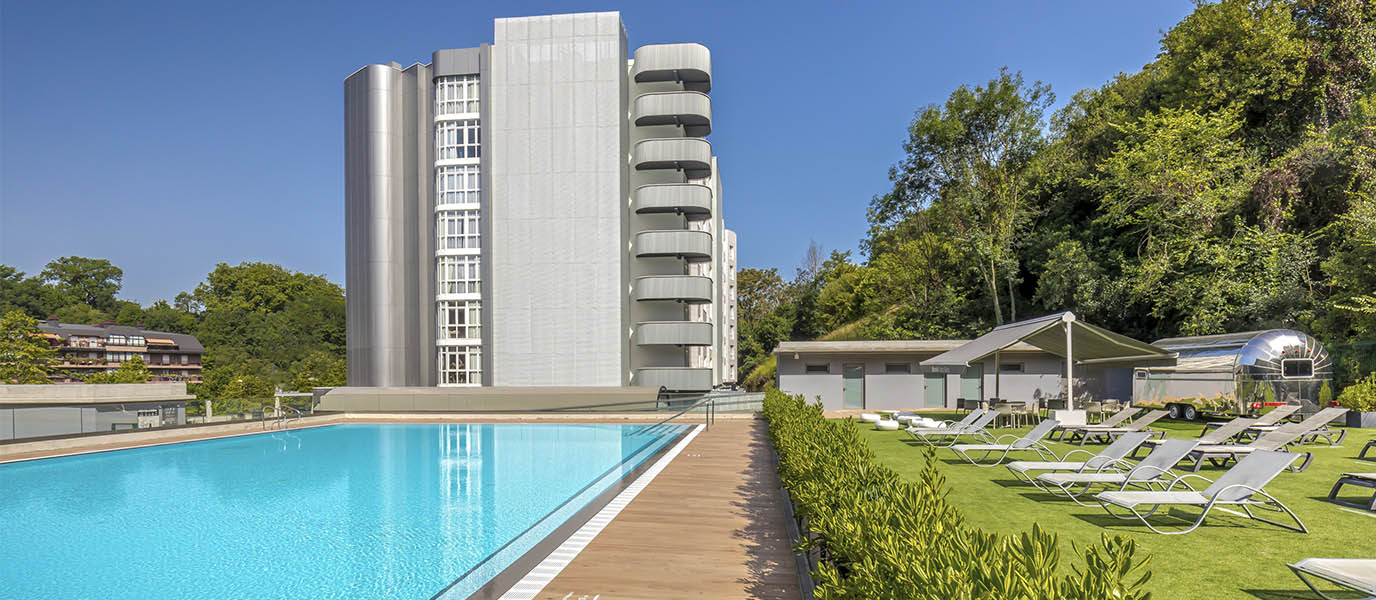Hiking is one of the main attractions in the Basque province of Gipuzkoa. Local and foreign walkers alike take to the numerous paths and trails that stretch the length and breadth of the area. Gipuzkoa, like the rest of the Basque Country, has a well-established hiking tradition and is a land of expert mountaineers and climbers. Ringing in the New Year atop a mountain is a local custom. Waymarked routes and wild trails await hiking enthusiasts and will transport those who traverse them away from the hustle and bustle of urban life.
Gipuzkoa has beautiful mountains and natural parks as well as some awe-inspiring coastal landscapes. There are several options ranging from gentle routes suitable for all abilities to more challenging itineraries for the seasoned hiker. People here are passionate about taking to the countryside, and it’s hard not to be tempted by the forests and coastal trails along this stretch of the Cantabrian.
Monte Ulía in San Sebastián
The short hike up Monte Ulía in San Sebastián – the capital of Gipuzkoa – attracts visitors from all walks of life. At the foot of the hillside is Playa de la Zurriola, one of the most popular local surf spots and part of the Gros neighbourhood. At the eastern end of the beach near the Iglesia del Corazón de María you can pick up the start of a 6.5-km trail that offers some unforgettable coastal views.
Climb the steep steps up Paseo Zemoria to reach the old tramway and enjoy impressive cliff-side views to your left as you continue along the path. Mompás Fort, the old Kutralla wash house and fountain, and the Herri Ametsa Basque School are just some of the landmarks you’ll encounter along the way. The trail rises and falls all the way to the Faro de la Plata (Silver Lighthouse) before descending into the picturesque town of Pasajes.
Txindoki, a popular mountain climb
Nicknamed the ‘Basque Matterhorn’, Txindoki has an altitude of 1,346 metres and sits in the south of the province. It forms part of the Aralar Natural Park, an area of narrow valleys, limestone mountains, forests and mist. It’s one of the most popular climbs in Gipuzkoa. The route to the top begins from a small hamlet near Abaltzisketa called Larraitz. It’s worth stopping in at the 18th-century hermitage before starting your hike.
The route zigzags through vast green landscapes and past farmhouses and beautiful meadows, posing no real challenge other than being a steep slog. You’ll be rewarded at the summit with beautiful views of the entire natural park. Make sure to pack a wedge of the local Idiazabal cheese in your backpack to enjoy at the top!
Aizkorri
This is another popular mountain, rising 1,528 metres above sea level. Aizkorri is part of the Aizkorri-Aratz Natural Park and there are several different ways to the top. One of them starts from the Santuario de Aránzazu. If you’re interested in history and legends, take the 16-km route through rocks and green landscapes in the direction of the San Adrián Cave. The trail has been a transhumant and pilgrimage route since the Bronze Age, as well as a through road for priests and important people. Prehistoric burial mounds will transport you back in time and the various hermitages along the trail add a spiritual dimension.
The adventure really begins at the Aldaola Pass from where a lush trail gently climbs to the foot of the mountain. Expect to see shepherds and livestock on your way to the 70-metre-long San Adrián Tunnel, complete with a hermitage inside. A beautiful 11th-century road guides your steps. Stop and gaze at the extensive Urbía pastureland before continuing to the Arbelar livestock shelter. The Aitzabal crag tells you that the end is in sight. At the top of Aizkorri awaits a large cross, a communication post shaped like an axe, and the Ermita del Santo Cristo.
Coastal trail between Zarautz and Getaria
The Gipuzkoan coast has a great route in store between Zarautz and Getaria. It runs alongside, but separate from, the road and affords some spectacular sea views. It’s an easy and relaxing walk and a favourite with the locals. Another charming route starts from Zarautz’s old town and follows the old Aldapeta road. It climbs Monte Santa Barbara, skirts the Vista Alegre Park and passes by vineyards growing varieties used to make txakoli, a typical Basque wine. Make sure to stop and explore the Ermita de Santa Barbara, a hermitage perched atop a precipice from where you can enjoy amazing views of Zarautz and the entire Basque coast looking towards Bayonne. Head back to the trail and after a gentle ascent you’ll reach Getaria with its characteristic peninsula called Monte de San Antón.
Jaizkibel
Monte Jaizkibel, a sandstone massif formed around 40 million years ago, sits to the west of the mouth of the Bidasoa River looking out onto the Cantabrian Sea. This is the wildest and most solitary part of the Basque coastline. It’s a tough route to the top and therefore ideal for experienced hikers. The dizzying cliffs, deep valleys, statuesque rock formations and hidden coves make for an impressive landscape.
The route starts at the promenade in Hondarribia and heads in the direction of the Higuer Lighthouse. You’ll pass the Artzu inlet and former mill, and the Arcibel stream. It’s a beautiful area for plant life, filled with a variety of fern species and giant bamboo. You can either take the Talaia trail – the easiest way to reach Pasajes (or Pasaia, in Basque), or follow the more difficult and less popular coastal route with its constant ups and downs. The cliffs of Jaizkibel are spectacular to look at and have important geological value. Other worthwhile stops along the route are the Playa de los Fósiles and Labetxu, the ‘valley of colours’ boasting reds, oranges, ochres and yellows as though it were nature’s very own oil painting. Before reading Pasajes the route takes you across the long and rocky Tximistakurratua beach.
Zumaia to Deba and the impressive flysch ledge
The 8-km coastal stretch between Zumaia and Deba is another popular local route that never fails to impress. The route traverses cliffs, rocky beaches and breathtaking scenery. The awe-inspiring flysch at Zumaia is formed by successive layers of limestone of different colours and textures. Over time the sea has eroded the rocks leaving behind this stunning formation that tells us much about how the Earth has evolved. The best time to see the flysch is at low tide.
Taking a walk along the flysch is like turning the pages of the history of the planet over the last 60 million years. Geologists from all over the world come here to see the flysch. Playa de Itzurun in Zumaia is a key part of the route – the rocks in this beautiful spot provide evidence of the great extinction of the dinosaurs and of other species from the end of the Cretaceous Period.




































































